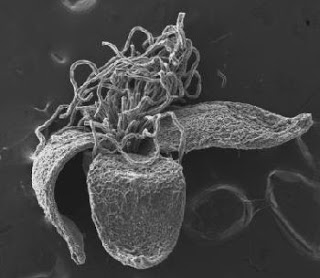
Researchers have shown that part of Australia’s rich plant diversity was wiped out by the ice ages, proving that extinction, instead of evolution, influences biodiversity.
The research led by the University of Melbourne and University of Tasmania has shown that plant diversity in South East Australia was as rich as some of the most diverse places in the world, and that most of these species went extinct during the ice ages, probably about one million years ago.
The team’s work was published in the prestigious journal Proceedings of the National Academy of Sciences.
Dr Kale Sniderman of the University of Melbourne’s School of Earth Sciences said the findings show extinction is just as important to diversity of organisms as evolution.
“Traditionally scientists believed some places have more species than others because species evolved more rapidly in these places. We have overthrown this theory, which emphasizes evolution, by showing that extinction may be more important, ” he said.
The study compared two regions of Southern Australia and South Africa.
“South-western Australia has a huge diversity of tough-leaved shrubs and trees such as eucalypts, Banksia, Grevilleas and Acacias, making it one of the most biodiverse places on earth,” Dr Sniderman said.
“The southern tip of South Africa is even richer, with astonishing numbers of similar kinds of plants like proteas and ericas.”
Scientists have long maintained that this diversity is somehow related to the poor soils and dry summers of these places.
For the study researchers analysed plant fossils that accumulated in an ancient lake in South Eastern Australia. They found the region had at least as many tough-leaved plants 1.5 million years ago as Western Australia and South Africa do today.
The results were entirely unexpected.
“As Australia dried out over the past several million years, rainforest plants largely disappeared from most of the continent,” said Dr Sniderman
“It has been thought that this drying trend allowed Australia’s characteristic tough-leaved plants to expand and became more diverse. We have shown that the climate variability of the ice ages not only drove rainforest plants to extinction but also a remarkable number of tough-leaved, shrubby plants,” he said.
Dr Greg Jordan of the School of Plant Sciences at the University of Tasmanian said not only has the study overturned current thought on the role of extinction in plant diversity, it has implications for understanding how Australian plant diversity will deal with current and future climate change.
“The species that went extinct in SE Australia during the ice ages were likely to be the ones most sensitive to rapid climate change, meaning that the species that now grow in eastern Australia may be more capable of tolerating rapid changes than predicted by current science,” he said.
“However, the species in hotspots of diversity like Western Australia may be much more sensitive to future climate change, because they have been protected from past climate changes.”
Note: This story has been adapted from a news release issued by the University of Melbourne










